Hahaha touche - it's at Joshua Tree national park in the US
Joshua Tree

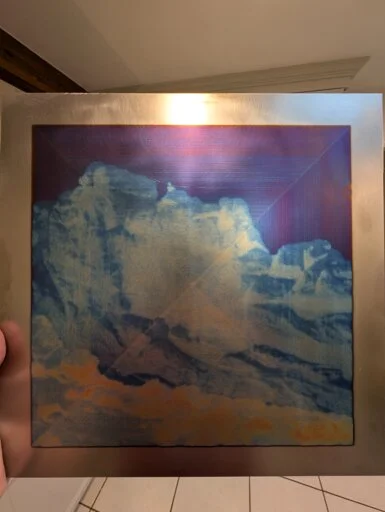
This has been a fun one - I was testing using more traditional pen plotter techniques (wiggly lines) to drive color instead of dwell time. It's really interesting how it comes out, the way the anodizing affects neighboring lines create a bit of a natural averaging that makes the whole thing look 'higher resolution' than the same thing drawn with just ink. Here's a closeup of the lines - pretty cool!

Thank you! I'm really proud of this one.
Tri Not

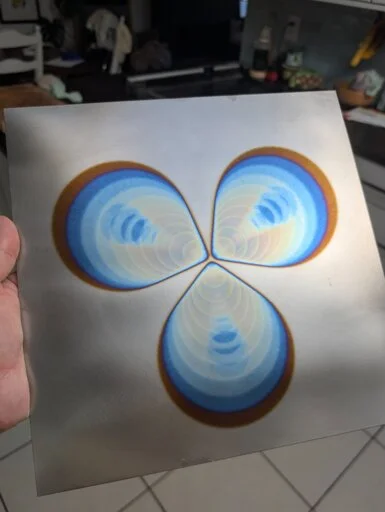
New print! This one played with a new technique. I noticed there is a speed that makes resonant vibrations in the pen plotter. This entire print runs at that speed, giving the colors some texture from the vibrations. The color variation comes from repeated passes over the same areas.
Applications like signal are encrypted at rest on your device as well - https://security.stackexchange.com/questions/277330/how-does-signal-protect-data-on-the-device-from-unauthorized-access
I gave it a run on Ubuntu touch with a fair phone like 8 months ago... It was still pretty rough then.
Square Flower
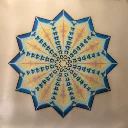

Another titanium print! This one is super geometric - the basis of the print is just a bunch of squares/diamonds rotated around a central point, the visual complexity comes from the combination of how they overlap and motion control of my pen plotter (specifically that it needs to accelerate and decelerate as it changes directions).
Thanks so much! I'm glad you enjoyed it, I'll keep posting for sure.
Good call, I can totally see that!
I actually just got the provisional patent filed! I'm going to start working on a breakdown of the process now and throw it up on my website. If you have any questions I'd be happy to answer now though!
It's actually a plate of titanium I did some patterned anodization on. Anodizing titanium creates a nanometers thick crystalline layer that can constructively/destructively interfere with lightwaves to create color without pigments or dyes. I invented a process to spatially control anodization a few months ago and I've been using to create art ever since. Let me know if you have any other questions!
Cyclometry #5
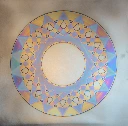
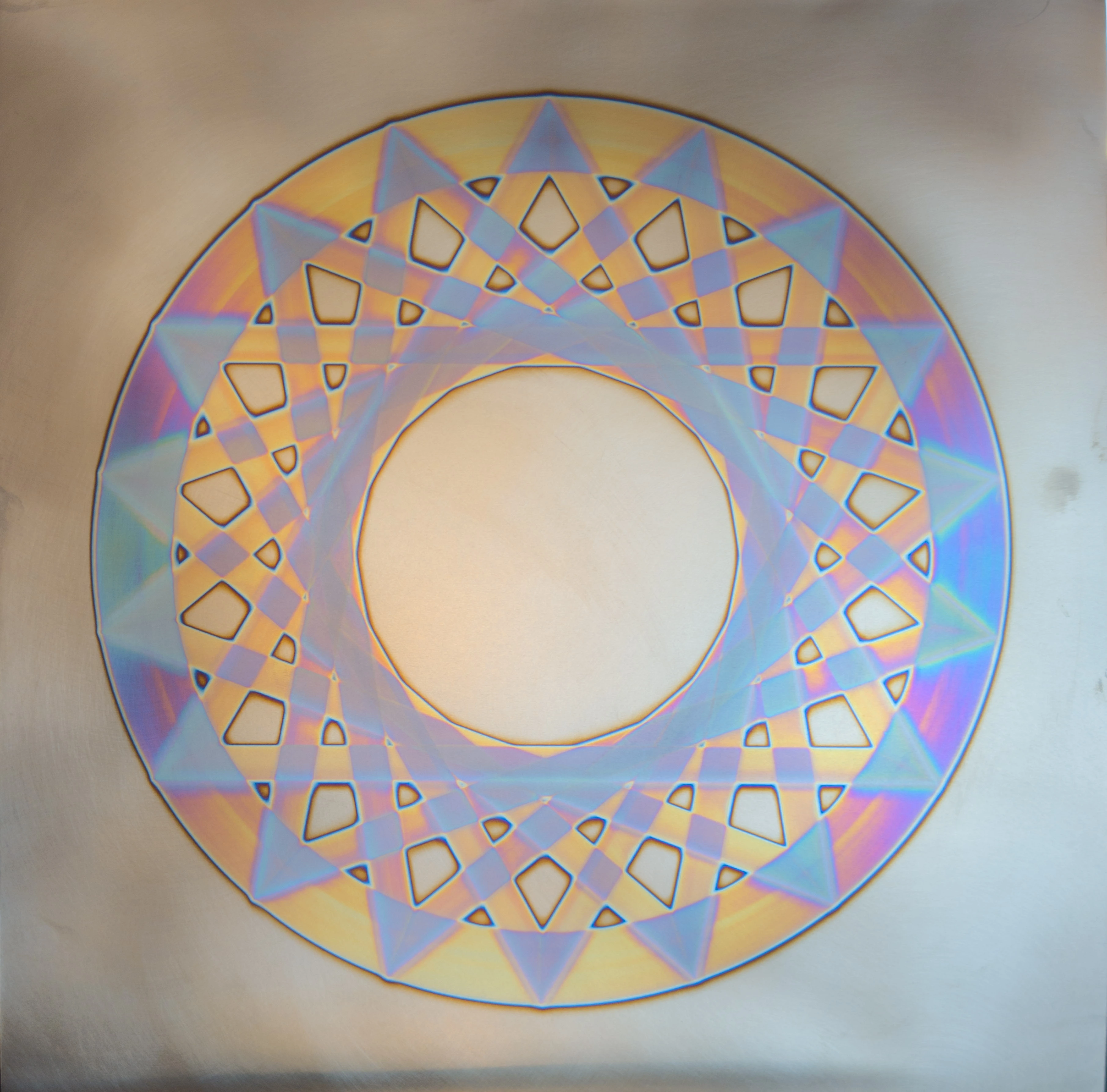
I've been playing around with more abstract stuff lately - I'm doing a series of prints that are basically just weird circles, hence the goofy old timey name of cyclometry :) The colors on this came out really neat in person!
The python/scipy/numpy computing stack
A vacuum sealer would be more robust and look less janky than a Ziploc bag. You can get a used food saver for cheap!
I've always wondered why more artists don't use photo paper, is it difficult to work with?
Thank you! For every good print I post here there are 2-3 failed attempts. But the successfully ones are getting cooler and cooler so I'm still stoked!
Thanks! That's exactly it on the color, I think it's a combination of the surface roughness of the titanium plate and tiny variations in the anodization layer itself that give it that look.
Pillars of Creation


Newest titanium print! It's of a region in the Eagle nebula, originally captured by the Hubble telescope. Space seemed like a cool place to explore a little more of the colorspace available in this process. Plate is 12"x18", image is ~9.5"x14".
I'm really happy with how this one came out, the background 'sky' is a gradienting deep iridescent blue, and the nebula itself hits some cool magentas, yellows, and a bluish-green that can't make its mind on what color it wants to be depending on angle and lighting.
Thanks so much! I'm glad you enjoy them, I'll keep posting!
It is, I've got it hanging in a local gallery at $1k US. If that price didn't scare you off I'd be open to negotiating over DM!
It is somewhat closer to traditional photography, but it's using an electrochemical process to create the colors. I'm so sorry I can't tell you more details right now, I'll quote my comment on details below. Once I file a patent on this I'll make a detailed post here on my process. Assuming it even gets granted I intend to make it free for individuals (but not corporations) to use.
So I'm going to just say it's an electrochemical anodization process for now. The detail comes from a new process I've been developing over the last month or so that I'm going to be filing a patent on soon. I'll be happy to share with you all once I've done so, but I the idea of Elon Musk maybe seeing one of these posts and using my process to make a fleet of printed titanium cyber trucks using my process would make me sad.
So I'm going to just say it's an electrochemical anodization process for now. The detail comes from a new process I've been developing over the last month or so that I'm going to be filing a patent on soon. I'll be happy to share with you all once I've done so, but I the idea of Elon Musk maybe seeing one of these posts and using my process to make a fleet of printed titanium cyber trucks using my process would make me sad.
No worries, it's very niche! In titanium means I'm "printing" an anodization (protective oxide layer) on a titanium surface. Titanium and Niobium have a unique property the oxide layer that forms on their surfaces is transparent, and extremely thin (think <1000 nanometers). The colors come from the incoming light constructively and destructively interfering in that oxide layer, so there are no pigments or dyes used in the process.
Waves on the beach in titanium

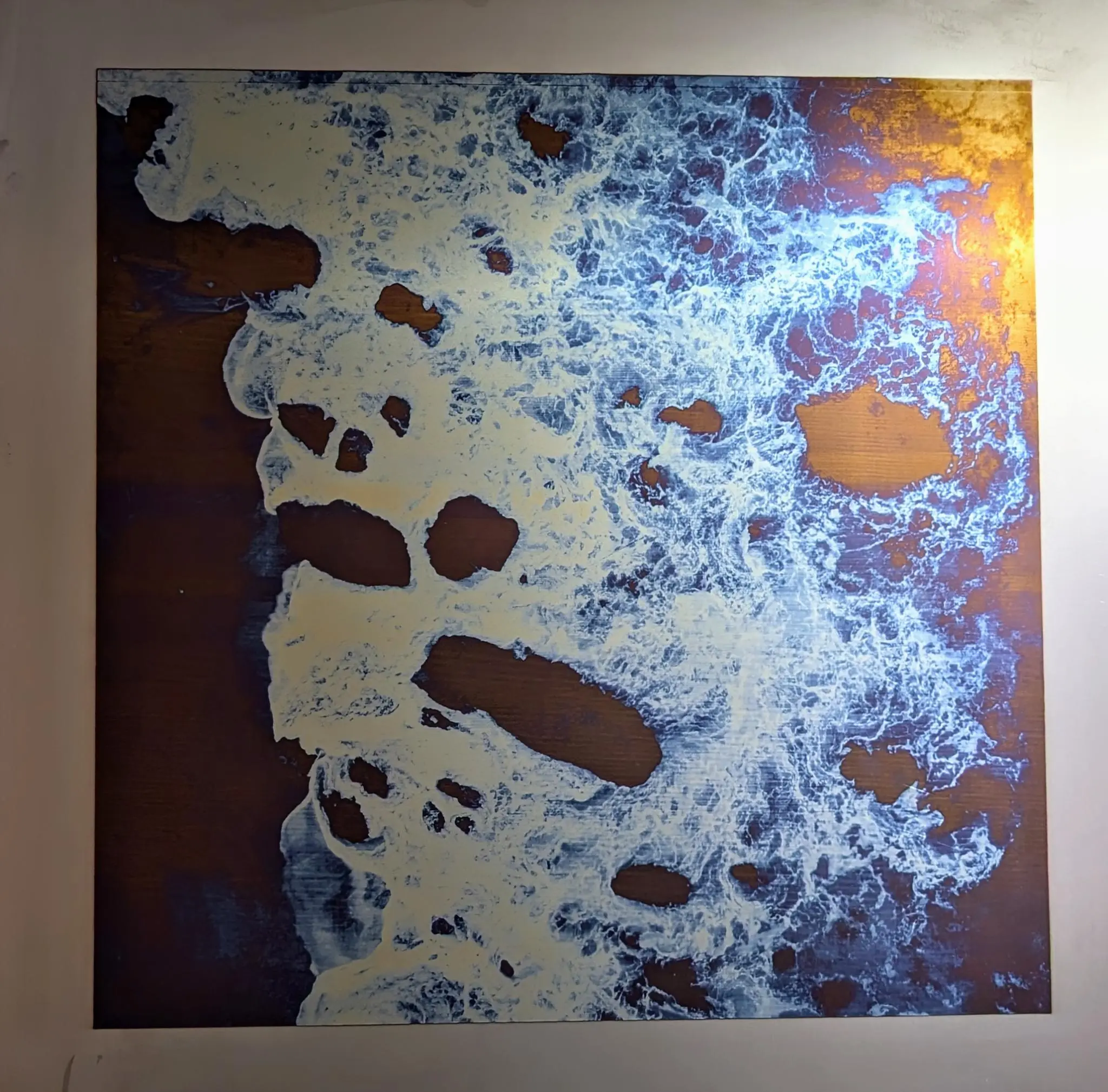
Apologies for the less than stellar lighting. This was my biggest print so far, just under 18"x 18"! I'm really happy with the details, but printing something this big was definitely a learning experience for me. It took 3 attempts to get this image out, but I learned a lot about tubing management and maintaining chemistry I can think about while I sand down my previous botched attempts :D
they'll always find a way
The premise is she's a prostitute who found a legal loophole, she doesn't charge for sex she charges for the condom.
When training you'll want way more VRAM than you need to run inference - get a 90 series GPU for the memory.
Hexagons is Bestagons

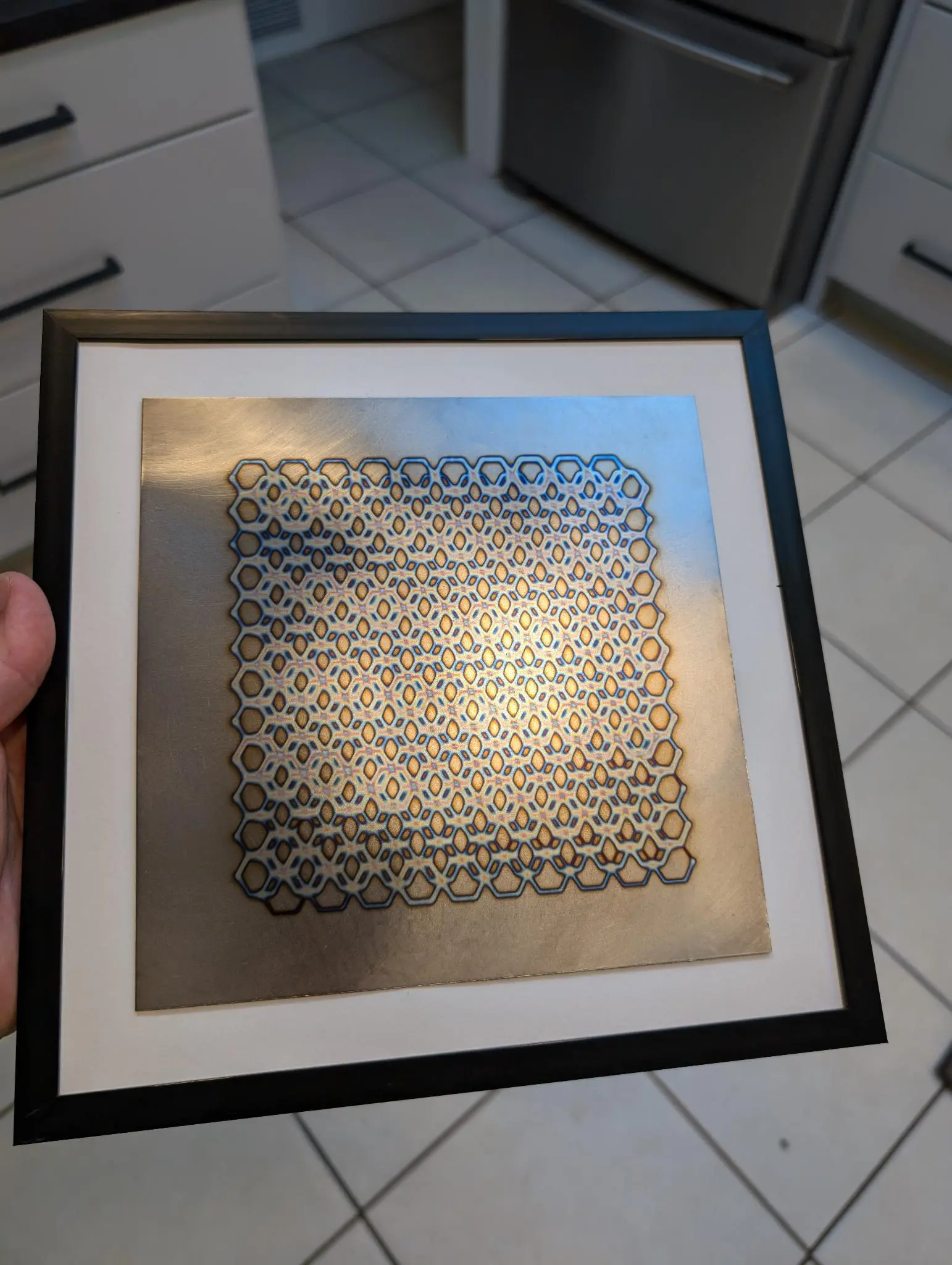
Another anodized titanium piece - this one is playing with line work. The color variation is from varying dwell time, which changes for each hexagon in a rolling pattern, as well as from the interactions between the hexagons.
Titanium Sunset

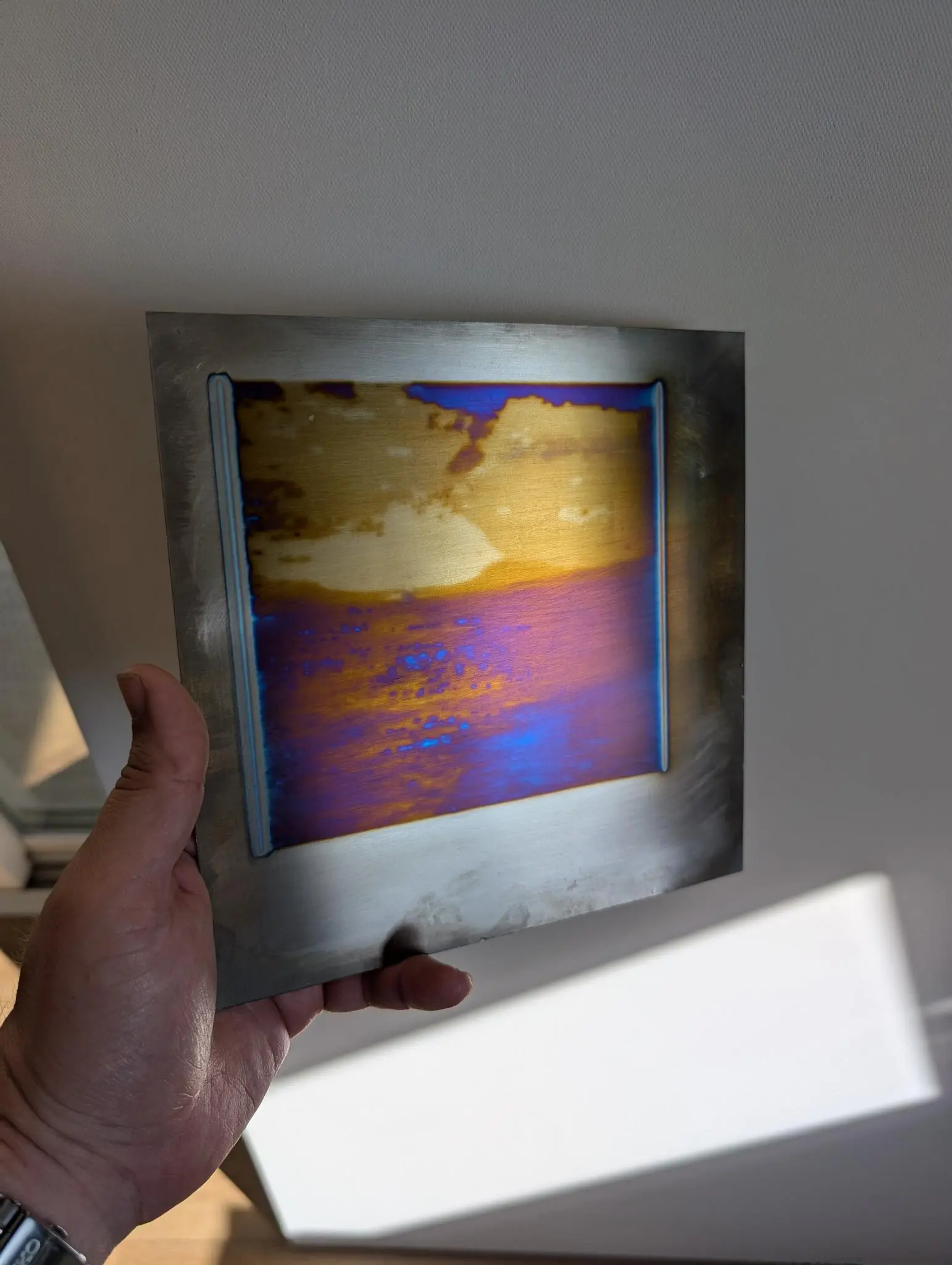
First post here - I’ve been experimenting with creating art by selectively anodizing titanium. Patterning anodized titanium isn’t new, but this process allows me to create full pictures, which I think is the first time this has ever been done.
This piece started off as a photo of a beach at sunset that I color mapped into the anodized Ti spectrum and printed.